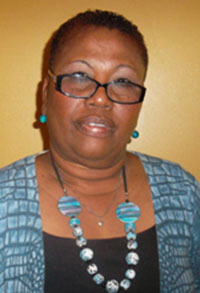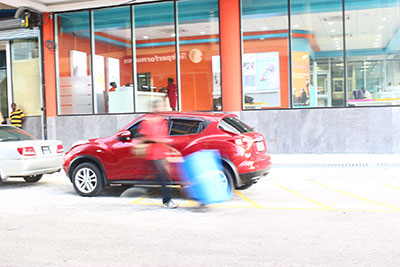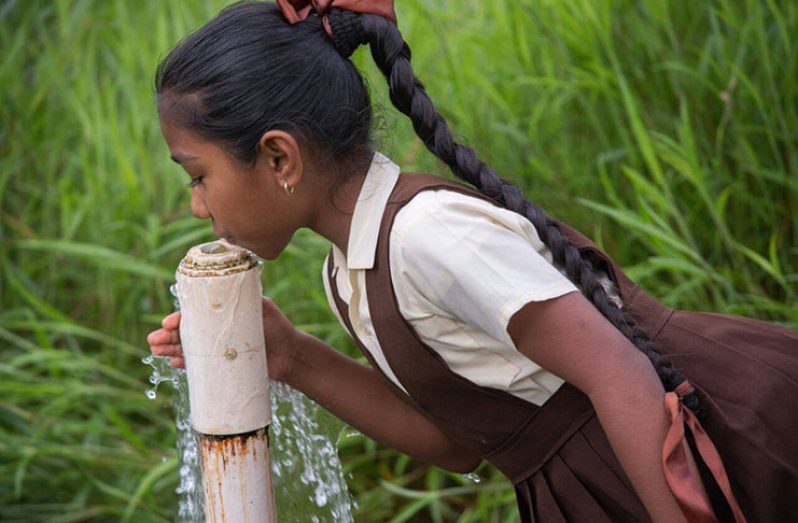-the challenge and solutions in the land of many waters
IT is hot. A nearby confectionery store offers shade for 16-year-old Damien.

“Dis place neva suh hot,” he says, using Guyanese a Creole refrain to explain that the heat is unbearable these days.
There is wisdom in Damien’s reasoning. The place is getting hotter. Research by the U.S. National Aeronautics and Space Administration shows the earth’s global temperature has increased by about 0.8° Celsius (1.4° Fahrenheit) since 1880. Two-thirds of the warming has occurred since 1975, at a rate of roughly 0.15-0.20°C per decade.
Damien, though, is not tuned to all of that science of climate change or global warming.

That the place is hotter is as far as his complaint goes. Damien reasons that the hotter temperatures will bring in more money for him.
Damian is one of many water vendors around central Georgetown keeping thousands hydrated in Guyana, a country that bears the reputation of being the “land of many waters.”
The irony in his story is that while he is providing water for many of Guyanese, he himself does not have access to safe drinking water at his home in Riverview, Ruimveldt, a community lapped by the Demerara, one of Guyana’s three main rivers.
“We does full water from we neighbour cause we ain’t got a pipe where we does live. But di water is grumzy [polluted] sometimes” he says, explaining that there is no access to safe drinking water where he lives, so he fetches from the neighbours.

The situation in Riverview is the same in other communities, or rather squatter settlements along the coast, such as at Parika along the Essequibo River, which has as its headwaters the Amazon basin, and serves as one of the most significant sources of freshwater in Guyana.
But reports show that most of Guyana has access to safe drinking water.
The 2016 Situation Analysis of the United Nations International Children’s Emergency Fund (UNICEF) reveals that 94 per cent of Guyana’s 747,000 population use an “improved source of drinking water.”
But what of Damien and others like him, who struggle to eke out a living? The UNICEF statistics show that “around 21 per cent of the poor population in Guyana does not have access to any source of improved water.”
The country’s water utility — Guyana Water Incorporated (GWI) – is looking to address the problem of inaccessibility to potable water. It has announced that as part of a general infrastructural development programme, 43 communities will get water for the first time. That adds up to 45,300 residents who are expected to benefit from this. New wells were recently drilled in GWI’s shelterbelt compound and in the sprawling communities of Sophia and Diamond, on the island of Wakenaam and in the town of Bartica.
According to Dr Richard Van-West Charles, Managing-Director of GWI, the agency’s priority at this time is ensuring all schools and health institutions have access to potable water. Both of these institutions target children and women – two of the most vulnerable groups in Guyana, according to the situation analysis.
“GWI is committed to ensuring schools and health institutions across the country have access to potable water,” he says, adding that the agency has begun with schools in the hinterland regions, using nano technology and the distribution of filters.
The situation analysis by UNICEF reveals that only 71 per cent of the hinterland population in Guyana use improved sources of drinking water. The situation in Region Nine (Upper Takutu – Upper Essequibo) was considered to be the worst of the country’s 10 administration regions, since only 42 per cent of the residents have access to an improved source.
“The quality of the water in some regions of the country is a problem that affects the health of children,” the UNICEF report states.
Dr Van-West Charles notes that after the utility company completes its exercise to ensure all health and educational institutions have access to potable water, GWI will be conducting regular testing to ensure water quality matches the standards of the World Health Organisation (WHO).
Late last year, some sections of the expansive community of Sophia, long labelled a depressed community because of poverty and lack of access to safe water, began receiving water for the first time, with over 20,000 residents thankful for having water flow through their taps.
Said local Councillor for the area, Lyndon Hilliman: “We waited a long time, but it was worth the wait. The service is great in terms of the pressure and quality is better than before….it is also less time-consuming because now we are getting easy access from our taps.”
He added: “Parents no longer have to worry about the safety of their children who used to go the blacka (blackwater canal)…now they can go to the tap and get water right away.”
While this effort continues to provide water for all, the challenge of climate change that Damien is oblivious to – at least, for now – is having a bearing on water for the world to drink.
By 2040, UNICEF warns that one in four children on the planet will die, have their growth stunted, or otherwise suffer from a lack of water. Titled “Thirsting for a future: Water and children in a changing climate,” the report highlights that 36 countries in the world already face “extremely high levels of water stress,” while more than 800 children under five die every day from diarrhoea linked to a lack of clean water and poor sanitation.
“The changing climate is one of many forces contributing to an unfolding water crisis. In the coming years, demand for water will increase as populations grow and move, industries develop and consumption increases,” the UNICEF report explains. The UN estimates that the world population will reach 9.7 billion by 2050.
Of course, Guyana is aware of unusual spells of dry weather, which can cripple agriculture, the lifeblood of the local economy. Exactly six years ago, Muslims in Guyana lead prayers for rain when a drought battered key agricultural crops of rice and sugar (with sugar production halted at four of eight estates); food shortages were also reported in indigenous communities.
But just last year, the so-called El Nino phenomenon caused farmlands to dry up and parched the Rupununi, sending residents to fetch water from considerable distances after wells in communities dried up. The government had to send food supplies to that region.
On the international front, Guyana is regarded as a leader in the fight against climate change. In June 2009, the then government launched its Low Carbon Development Strategy (LCDS), which aims to transform Guyana’s economy to a low carbon, sustainable development trajectory, while simultaneously combating climate change.
Despite overwhelming evidence of climate change and its devastating effects, Presidential Advisor on the Environment, Rear Admiral (Rtd.) Gary Best, believes that the attitude of some countries towards this issue remain, in the main, the same.
He contends that “…the rich [states] are called upon by the not–so-rich to reduce greenhouse gas emissions, while at the same time suspicions abound among the developing states that the rich intend to thwart their economic growth and so they resist signing protocols.”
In the foreword of UNICEF’s “Thirsting for a future: Water and Children in a changing climate” quoted above, Professor Anthony Lake, Executive Director of UNICEF, wrote: “Water is elemental. Without it, nothing can grow. Thirst itself kills children and jeopardizes their future.”
Head of the Child Care and Protection Agency (CCPA), Ann Greene agrees with Professor Lake.
She contends that children are the most at-risk group, since they are dependent on adults to provide for them.
Greene notes that while efforts are ongoing to protect children from social and environmental ills, they can never be enough. She explains that while many use the phrase “children are the future,” many of them fail to realise that the needs of children should be prioritised if the future of mankind is to be protected.
“Every attention should be paid to protect children, both at a domestic and international level, at the level of government and in homes, to ensure our future is secured, because children are the future,” she says.




.png)









